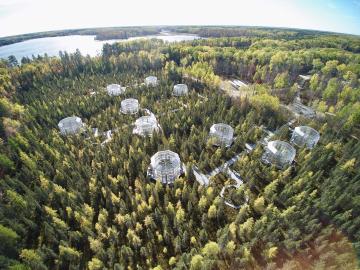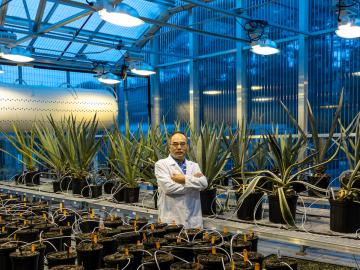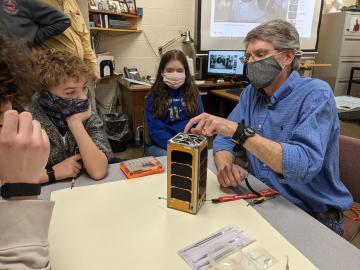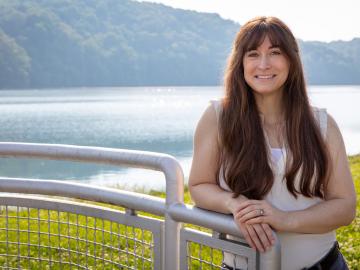
Filter News
Area of Research
- (-) Biology and Environment (101)
- (-) Isotopes (7)
- (-) National Security (21)
- Advanced Manufacturing (8)
- Biological Systems (1)
- Biology and Soft Matter (1)
- Building Technologies (2)
- Computational Biology (2)
- Computational Engineering (1)
- Computer Science (4)
- Electricity and Smart Grid (2)
- Energy Science (111)
- Energy Sciences (1)
- Fusion and Fission (20)
- Fusion Energy (10)
- Materials (63)
- Materials for Computing (13)
- Mathematics (1)
- Neutron Science (80)
- Nuclear Science and Technology (28)
- Nuclear Systems Modeling, Simulation and Validation (1)
- Quantum information Science (3)
- Sensors and Controls (1)
- Supercomputing (59)
News Type
News Topics
- (-) Biomedical (17)
- (-) Composites (2)
- (-) Coronavirus (8)
- (-) Environment (77)
- (-) Exascale Computing (4)
- (-) Grid (7)
- (-) Microscopy (7)
- (-) Nanotechnology (3)
- (-) Neutron Science (3)
- (-) Nuclear Energy (4)
- (-) Security (7)
- 3-D Printing/Advanced Manufacturing (5)
- Artificial Intelligence (12)
- Big Data (14)
- Bioenergy (37)
- Biology (58)
- Biotechnology (9)
- Buildings (1)
- Chemical Sciences (4)
- Clean Water (11)
- Computer Science (23)
- Cybersecurity (9)
- Energy Storage (4)
- Frontier (3)
- High-Performance Computing (18)
- Hydropower (8)
- Irradiation (1)
- Isotopes (19)
- Machine Learning (13)
- Materials (6)
- Materials Science (5)
- Mathematics (3)
- Mercury (7)
- National Security (25)
- Partnerships (2)
- Physics (1)
- Polymers (1)
- Quantum Science (1)
- Simulation (10)
- Space Exploration (3)
- Summit (9)
- Transportation (2)
Media Contacts

Scientists at ORNL and the University of Wisconsin–Madison have discovered that genetically distinct populations within the same species of fungi can produce unique mixes of secondary metabolites, which are organic compounds with applications in

Scientists studying a unique whole-ecosystem warming experiment in the Minnesota peatlands found that microorganisms are increasing methane production faster than carbon dioxide production.

As rising global temperatures alter ecosystems worldwide, the need to accurately simulate complex environmental processes under evolving conditions is more urgent than ever.

Scientists at ORNL have discovered a single gene that simultaneously boosts plant growth and tolerance for stresses such as drought and salt, all while tackling the root cause of climate change by enabling plants to pull more carbon dioxide from the atmosphere.

RamSat’s mission is to take pictures of the forests around Gatlinburg, which were destroyed by wildfire in 2016. The mission is wholly designed and carried out by students, teachers and mentors, with support from numerous organizations, including Oak Ridge National Laboratory.

Carly Hansen, a water resources engineer at Oak Ridge National Laboratory, is rethinking what’s possible for hydropower in the United States.

Deborah Frincke, one of the nation’s preeminent computer scientists and cybersecurity experts, serves as associate laboratory director of ORNL’s National Security Science Directorate. Credit: Carlos Jones/ORNL, U.S. Dept. of Energy

Belinda Akpa is a chemical engineer with a talent for tackling big challenges and fostering inclusivity and diversity in the next generation of scientists.

Esther Parish is one of eight scientists from the Department of Energy's Oak Ridge National Laboratory talking to students in nine schools across East Tennessee as part of National Environmental Education Week, or EE Week.

Rich Giannone uses bioanalytical mass spectrometry to examine proteins, the primary driver in biological systems.


